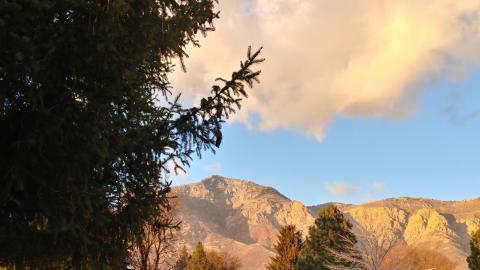

Message to those planning to donate to the homeless: There’s a better way
Clean up crews collect items off the street daily; Lt. Governor and local officials will share the best way to ensure donations are utilized
What: During the holiday season, many wish to donate to those in need. Although it is with good intention, donating directly to homeless individuals on the street often become items left on the street for clean up. City officials also have public safety and health concerns. Lt. Governor Spencer Cox will be joined by local officials to discuss these concerns and provide best practices for donating during the holiday season and throughout the year.
Who:
Lt. Governor Spencer Cox
Pamela Atkinson, community advocate
Cory Young, Salt Lake City Waste and Recycling Program Manager
Matt Melville, Catholic Community Services
*Additional service providers, public safety officers and Downtown Alliance Ambassadors will be in attendance
When:
Tuesday, December 4 at 10:00 a.m.
10:00 a.m. Lt. Governor and local officials address members of the media
10:30 a.m. B-roll opportunity, St. Vincent de Paul dining hall and donation process; shadow Downtown Alliance Ambassadors with outreach efforts
Where:
St. Vincent de Paul Dining Hall
437 West 200 South, Salt Lake City, Utah 84101
(Media parking will be available in lot just east of the dining hall; pull in off of 200 South)
===============
Utah Mining Production Value in 2017 Totaled $3.3 Billion,
up Seven Percent from 2016
Utah Mining 2017, A Summary of Utah’s Mining Activity Released
by Utah Geological Survey
Salt Lake City (Dec. 4, 2018) – The value of Utah’s mineral production in 2017 totaled about $3.3 billion and is up about 7 percent from 2016. This finding is presented in a new report by the Utah Geological Survey (UGS). The publication, Utah Mining 2017, contains detailed information on value and production of Utah’s mined commodities including metals, industrial minerals, and coal.
The value of both base and precious metals production increased significantly in 2017, 11 percent and 15 percent, respectively. Base metal production contributed $1.4 billion to the total value and includes copper, magnesium, beryllium, and molybdenum; copper accounts for 70 percent of total base metal production value.
Precious metals produced in Utah include gold and silver, and were valued at $261 million in 2017. Utah also produced industrial mineral commodities including sand and gravel, crushed stone, salt, potash, cement, lime, phosphate, gilsonite, clays, gypsum, and others. The estimated value of industrial mineral production in 2017 reached $1.2 billion, a 5 percent increase over 2016. The most valuable industrial mineral group in 2017, estimated at $410 million, was the brine- and evaporite-derived commodities that included potash, salt, and magnesium chloride. In contrast to other minable commodities, the value of Utah coal production decreased in 2017 to $493 million, from $509 million in 2016. Notably, Utah remains the only state to produce magnesium metal, beryllium concentrate, potassium sulfate, and gilsonite. Of these mineral commodities, magnesium, beryllium, and potash (includes potassium sulfate) are included on the U.S. Department of the Interior’s 2018 critical mineral list.
Nationally, the U.S. Geological Survey ranked Utah 8th in production of metals and industrial minerals in 2017―Utah has ranked among the top ten for the past decade. The U.S. Energy Information Administration ranked Utah as the 11th largest coal producer out of 24 coal-producing states and accounted for 1.9 percent of total U.S. coal production.
The summary report has been substantially revised since its previous release and includes helpful new figures showing historical production of a variety of mineral commodities and highlights various economic data, such as the mineral industry’s tax contributions. Utah Mining 2017 also provides information on historically produced commodities such as uranium, and current mineral exploration and development within the state including information about vanadium and lithium.
The 30-page report, Utah Mining 2017 (UGS Circular 123), is available as a free download on the UGS website at https://ugspub.nr.utah.gov/publications/circular/c-125.pdf. The report can also be purchased at the Natural Resources Map & Bookstore, located at 1594 West North Temple, Salt Lake City, (801) 537-3320 or 1-888-UTAHMAP, http://mapstore.utah.gov.
The Utah Geological Survey provides timely scientific information about Utah’s geological environment, resources, and hazards.
-------------------------------
Utah Division of Water Resources and UTA
Partner to Purchase Property
Utah Division of Water Resources (DWRe) and UTA are partnering to jointly acquire property in Box Elder County adjacent to Union Pacific’s existing rail corridor.
###
ReplyForward